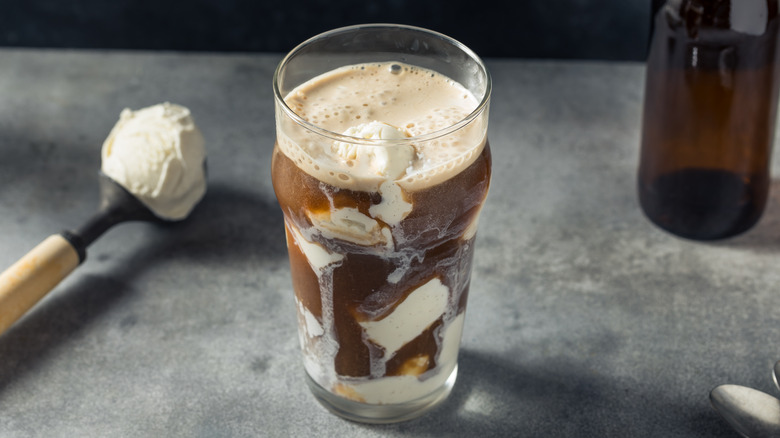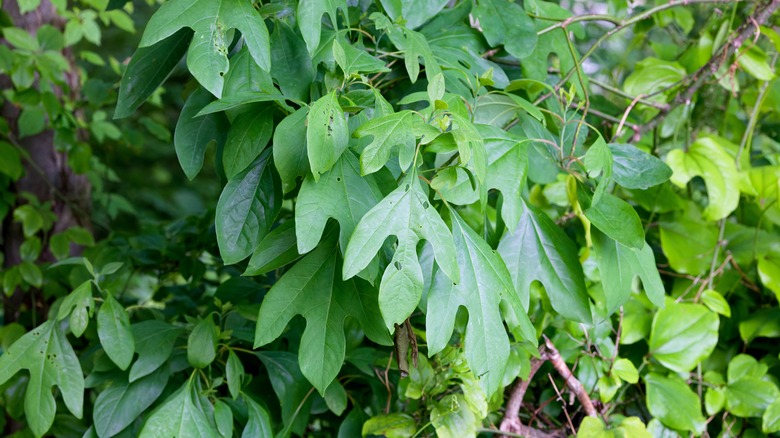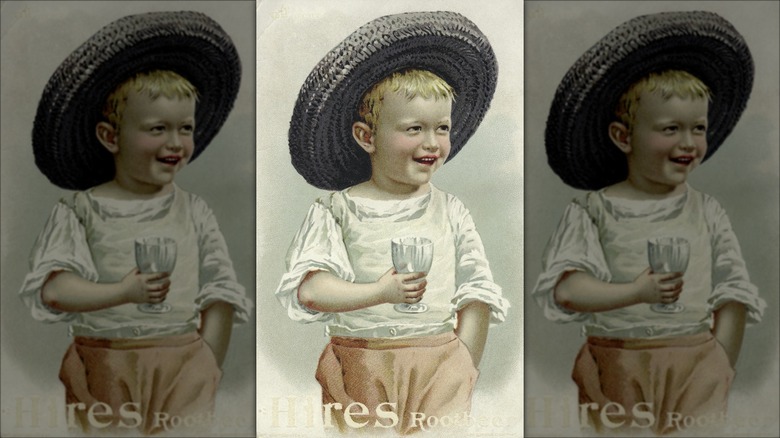How Root Beer Got Its Misleading Name
Pennsylvania miners around the turn of the 20th century were among the first intended recipients of the original commercial root beer recipe. However, no amount of coaxing could convince them to taste it. And why? Because 'powder root tea,' the name of the original concoction, just didn't sound like it had the kick that beer, the miners' poison of choice, did. Fortunately for Charles E. Hires, the man behind the drink, a wise mentor suggested that 'root beer' hit male ears differently than root tea ever would. Never mind that his drink did, indeed, contain a combination of 16 roots, berries, and herbs and that the earlier folk versions of it had actually been a tea. The name was a turn-off. It had to go.
Hires, a pharmacist by trade originally, did eventually sell plenty of his root drink with its unique flavor. Creating a recipe that no longer cleaned out the bowels, as earlier versions of the drink did, couldn't have hurt the beverage's chances of success. Advertising the powdered potion certainly helped the drink's plight even more. But it was a stint at the Philadelphia Centennial Exposition of 1876 that solidified the name and the drink. The Bard had it right. A rose — or a root beer, in this case — by any other name would still taste as sweet, at least to the working-class attendees of the Expo.
The evolution of a folk remedy
The earliest incarnations of the root tea would never have been at home with a scoop of vanilla ice cream floating around on top. For the Native Americans who gathered the sarsaparilla, sassafras, and wintergreen from whence the earliest incarnations of the drink sprang, those plants meant remedies for allergies and inflammation, and were even immune system boosters. Medicinal drinks, called saloop, they were; root beer floats with ice cream, they were not, despite being flavored with sugar and milk, like coffee and tea were.
Many of the ingredients that went into these concoctions became the base for what early European settlers called small beers, which were beverages that had trace amounts of alcohol and offered a better alternative than the sometimes questionable water supply. Sassafras, which is where sassafras root, the primary ingredient in Hires' root beer comes from, was also popular among the European settlers of the 16th and 17th centuries. As it turns out, Sir Francis Drake and Sir Walter Raleigh played key roles in making the plant available across the pond, with Drake bringing it to England in 1586 and Raleigh exporting it in 1602. The plant proved so popular as a small beer ingredient and coveted export, it faced extinction from deforestation.
The early cola wars
Leave it to the 19th-century pharmacist to marry the medicinal qualities of sassafras root with the elements of a soft drink. This practice became a trend during that period. To put it into perspective, the earliest versions of Coca-Cola came out in the late 19th century. It contained actual cocaine and was advertised as a remedy to common ailments, just as root beer was. Unsurprisingly, many of today's soft drinks find their roots in the medicinal teas and remedies of that era.
In any case, Hires took the recipe for root beer, which he encountered at an inn where he spent his honeymoon, and gave it to two college professors. With their help, he created the first powdered root beer, which consumers were to mix with yeast, sugar, and water. That version eliminated the laxative effect that had plagued the original recipe. It also gave Hires, an ardent Quaker, an alcohol-free drink to promote. While his original goal was to sell root beer to the beer-imbibing miners of Pennsylvania, Hires went on to advertise the drink to everyone, including kids.
Hires' new drink eventually got a new purpose. It was no longer expected to be a booze replacement for wayward miners. According to early ads, root beer possessed such power that it supposedly helped "even a cynic see the brighter side of life," (per "Sundae Best: A History of Soda Fountains" by Anne Cooper Funderburg).


